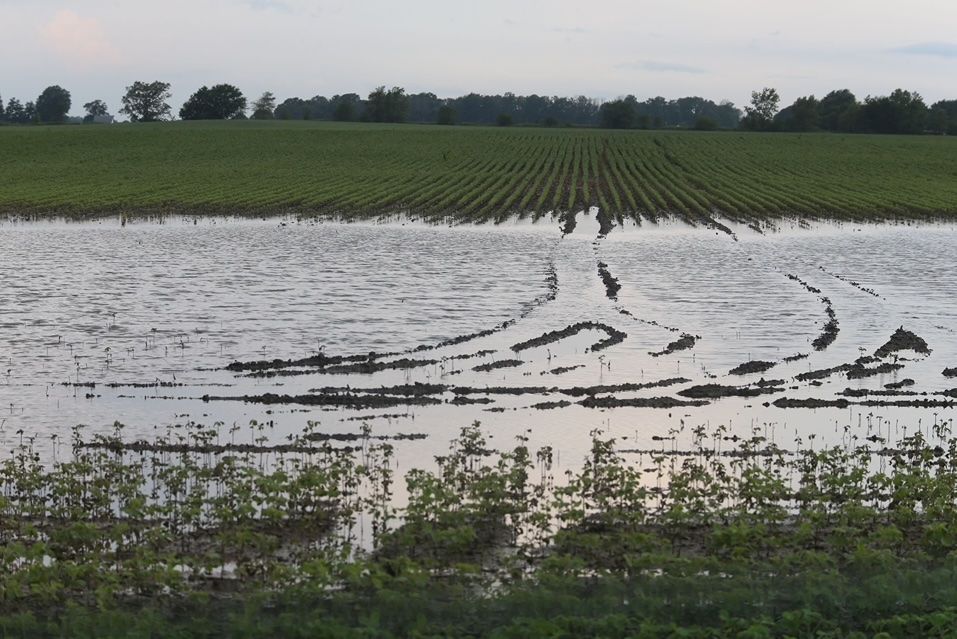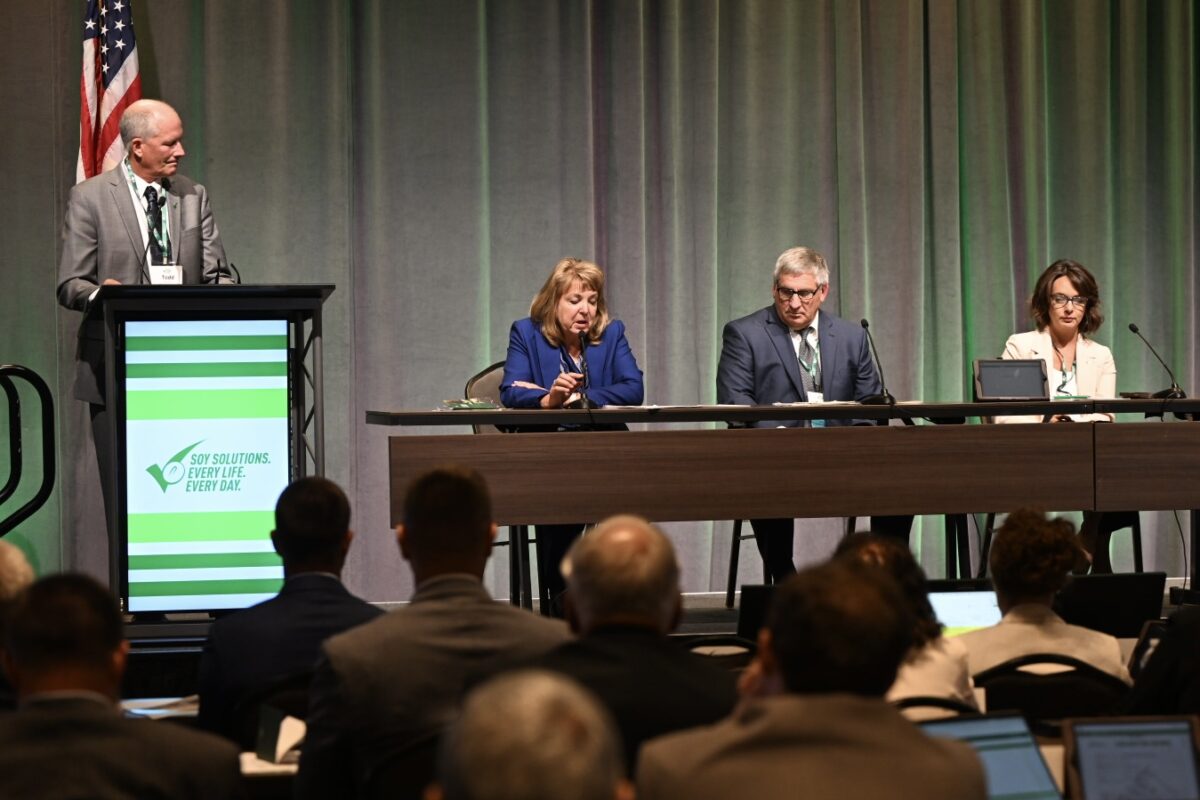Different Paths, Same Goal: Sustainability Is Universal Priority for Soybean Farmers Nationwide

What’s good for Iowa soybean farms may not be so great for Georgia soils. But one thing is certain: Farmers embrace the importance and value of sustainable practices regardless of region.
Farmers continually evaluate which integrated systems approach works best to enhance environmental impact, maximize resource use and sustain economic viability.
The 2019 season has provided opportunity to put new ideas into practice. As harvest approaches, farmers are assessing a difficult growing season. Weather extremes, planting delays, prevented plantings, soybean price pressure and concern about early frost not only weigh on economic thinking, they alter sustainable management decisions for the future. Here’s how four farmers are addressing their circumstances to grow soybeans with environment in mind.
Upper Midwest: Incorporating Precision Technology Is Critical
Pat Sullivan places a priority on using all the precision technology he can. He raises soybeans, corn and canning vegetables with his father and two brothers near Franklin, Minnesota. He also sits on the Minnesota Soybean Research and Promotion Council board and heads up committee efforts to explore ways to improve environmental stewardship for soybean farmers.
“We are always looking for the next big thing in technology for our farm. You have to incorporate precision agriculture on the farm here to survive,” he says. “We use everything from variable applications for seed, fertilizer and herbicide to yield monitoring at harvest.”
Sullivan notes, unlike many regions, Minnesota is known for its sugar beet production. Farmers have demonstrated the merits of cover crops following an early sugar beet harvest, encouraging growers to try cover crops following other commodities.
The “Land of 10,000 Lakes” also makes water quality a priority. According to the Minnesota Pollution Control Agency, the state has 80 major watersheds, and the state has adapted protection strategies for all of them.
“We have nice, black soil and farm some rolling ground, so we tile as much as we can. That is common in this area,” he explains. “We also have a lot of drainage ditches and are conscious about water quality, so we have 50 feet of buffers in the Conservation Reserve Program, too.”
Sullivan’s best management practices include planting cover crops after their canning crops. Tillage practices vary across the region, but the Sullivans rely on minimum till, running a field cultivator in the spring. They also run vertical tillage in corn stalks and once across soybean ground. They tested strip till this year and are anxious to see what post-harvest results show.
“Weather has shown some wet and dry extremes the last several years, and that may affect some of our sustainable practice decisions in the future,” he says. “We have concern about herbicide drift and new soybean diseases, and hope seed genetics will keep us ahead of the curveballs.”
Central U.S.: Soil Health Attention Protects Production
Tom Kentner raises corn and soybeans in a 50-50 rotation with his family near Danville, Illinois. You could describe this area in the east central part of the state as having a 360-degree, virtually unrestricted view of the horizon. And while flat fields may be relatively easy to manage for Illinois farmers, when those fields are in a watershed, sustainable practices are critical to success.
“We farm in the Vermilion watershed, part of the Wabash River Basin, which supplies water to the city of Danville,” says Kentner. “We have waterways and use tile to not only protect the groundwater supply, but also to reduce erosion and soil compaction.”
Soil health is a priority for Kentner. Corn is strip-tilled, and soybeans are no-tilled. Cover crops, new to the operation, include a mix of oats, radishes and annual and cereal rye.
“We take annual soil samples and do some tissue testing to see what the plants need. We apply nutrients accordingly to maximize return on investment and maximize our stewardship,” he says. “All of our decisions are based on crop needs at the time. We scout at least once per week and sometimes two times per week for bugs and diseases and to monitor plant health.”
Kentner relies on banded application of dry nutrients for corn, going 5 to 6 inches deep in the soil. Nitrogen is spoon-fed two to three times during the season. Kentner may consider variable rate fertilizer and seeding in the future as more of a prescriptive approach.
“We are always looking for new things and moving and trading equipment to reduce our overall investment for better returns and greater stewardship,” he says. “In this region, we are seeing some farmers switch from no-till to minimum and vertical till. The goal is to implement the best management practices and stay a step ahead of any new regulations or mandates.”
Sustainability is a priority for farmers in every region who have passion for the soil and the next generation. “We are blessed in the Midwest where it is not too hot or too dry, although that could change down the road,” says Kentner, who is on the Illinois Soybean Association board of directors. “I am appreciative we have commodity associations that invest checkoff dollars in sustainability that can open new doors for us ahead of production challenges.”
South: Maximizing Water Management Improves Production
Dresden, Tennessee, farmer Kenneth Moore says crop production in the Midsouth is challenged by either too much or not enough water. Moore, a past chair of the Tennessee Soybean Board, farms with his son, Ben. The pair grow corn, soybeans and wheat along with some cattle and also plant cover crops to help maintain soils. Ben has added a 4,800-head barn to raise pigs for a vertically integrated commercial operation.
“I have raised crops for 48 seasons in my lifetime, and no two years have been the same,” says Moore. “We may have had about five years of ideal production. The rest each had their own challenges. You just learn to deal with it and make adjustments as you go.”
The Moores farm both bottomland and upland ground in northwest Tennessee. They have added tile to manage drainage issues on the bottomland and irrigate some acres in the upland fields to compensate for less water. Fields contain a variety of soil types, often within the same field.
“Not disturbing the soil is our top priority,” says Moore. “We no-till all of our crops to prevent soil erosion and build up organic matter. We use the manure from the pig barn for nutrients, too.”
In addition, Moore has partnered with the Natural Resources Conservation Service to develop structures to improve conservation in environmentally sensitive areas. For example, they have added field border strips to reduce soil erosion while providing habitat for wildlife. They also use mats to jumpstart grass growth in their waterways and catch basins to slow water down.
“If I could change anything here, it would be that water can be a limiting factor. We may add more irrigation to manage that,” he says. “I also consider marketing part of our sustainability. The last few years have been challenging, and it is always our goal to sell more profitably.”
Eastern U.S.: No-Till Promotes Better Nutrient Management
Farming in the Chesapeake Bay watershed is no easy task, where crop production represents the largest single source of nutrients and sediment entering the bay. Maryland farmers like William Layton have managed to reduce loads in the watershed by about 10% in the last eight years, and continue to look for sustainable practices that help minimize impact on their environment.
The Layton family operates Lazy Day Farms near Vienna, Maryland, and has been part of farming in Dorchester County adjoining the Chesapeake Bay since 1948. William raises corn and soybeans with his parents, Joe and Laura, and wife, Jennifer. The family also has added 14 acres of grapes and runs Layton’s Chance Vineyard & Winery.
“Sustainability is critical to our existence, with a big focus on the environment,” explains Layton, soy checkoff farmer-leader and past chair of the Maryland Soybean Board.
Layton’s family switched to 100% no-till corn and soybean production about 30 years ago. No-till practices have been proven to increase organic matter, reduce herbicide runoff and lessen soil erosion. Most of his fields are small in comparison to fields in other soybean regions with an average size of about 25 acres.
“There are significant differences in sustainability practices throughout the country. Hillier areas have more problems with erosion and require much more with terracing, filter strips and no-till to reduce it. With our proximity to large bodies of water, we have to do more with an emphasis on water quality than they may have to do in the Midwest,” he says. “Where they have large, square fields, ours are squeezed in among woodlands, wetlands and rivers.”
To manage water runoff and crop input use, Layton added grass buffers around all fields. The buffers catch any potential pollutants, as well as limit soil erosion and serve as wildlife habitat. Cover crops pull up excess nutrients, increase organic matter and reduce soil compaction.
“Buffer strips do as much to improve the land around us, both in the short and the long runs, as they do help us to maintain productivity within our fields,” he says.
“We do a lot of site-specific soil sampling and add our potash, phosphorus and lime according to what that shows,” says Layton. “We have definitely reduced our production costs with the use of GPS and variable application rates. We have to follow regulations, but those rules have not only made environmental sense, they have gone from perceived obstacles to clear benefits.”
While Layton must jump through many regulatory hoops, he appreciates the nice flat land, good productive soils and favorable temperatures of the region.
“Sustainability practices pertaining to surrounding water quality are much more of a priority to the government in our area,” says Layton. The Chesapeake Bay is an enclosed ecosystem that brings a lot of visibility, but the rest of the country has vulnerable areas, such as the Great Lakes, the Mississippi River and the Gulf of Mexico, that also see problems. Farmers in those areas are changing their practices to better protect these waterways. “We are farther along in the Chesapeake Bay region,” he says, “but the rest of the country is not far behind in placing an emphasis on water quality.”
The difficult 2019 season only highlights the need for farmers to evaluate their operation’s practices and select what works best for their region. Although practices may change to suit the sandy soil of Wisconsin or the red loamy soil of Alabama, farmers are all looking to reduce their environmental impact and increase their economic viability.



